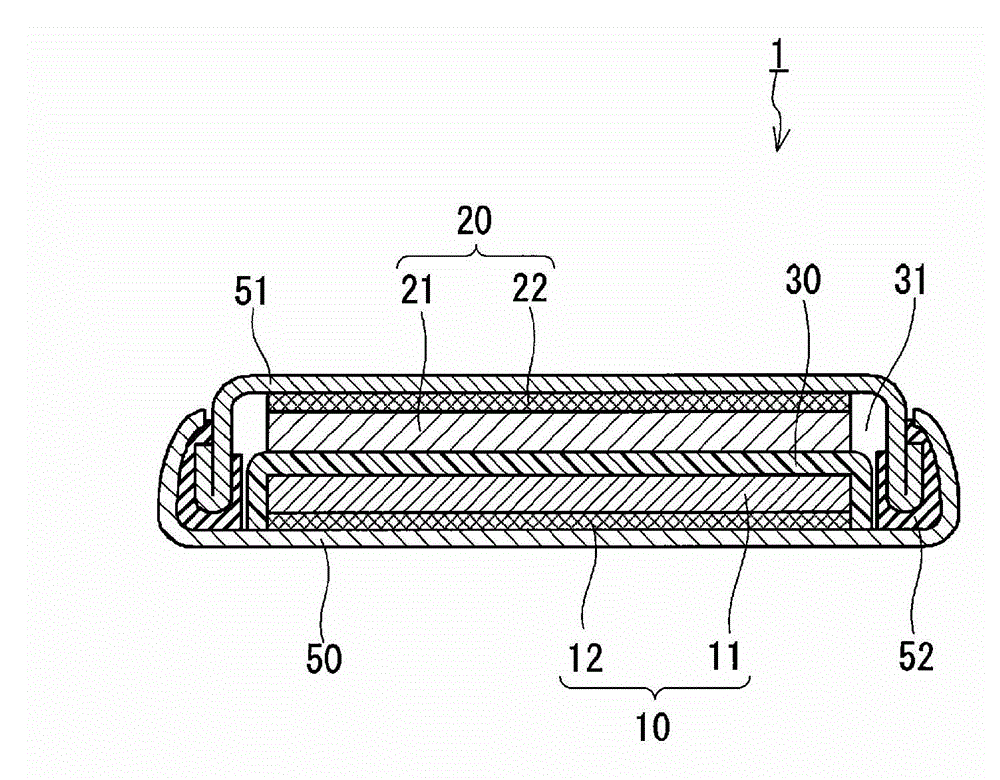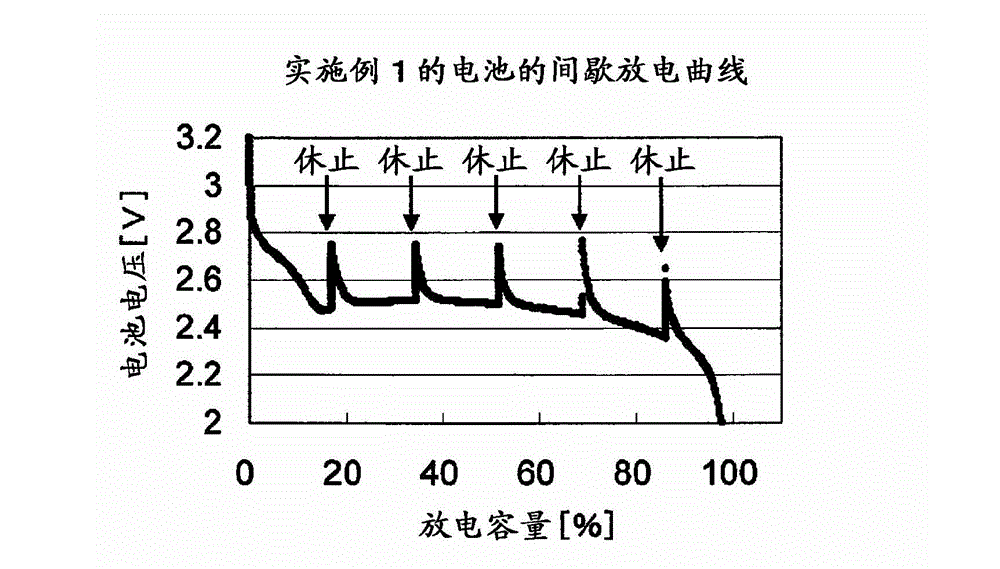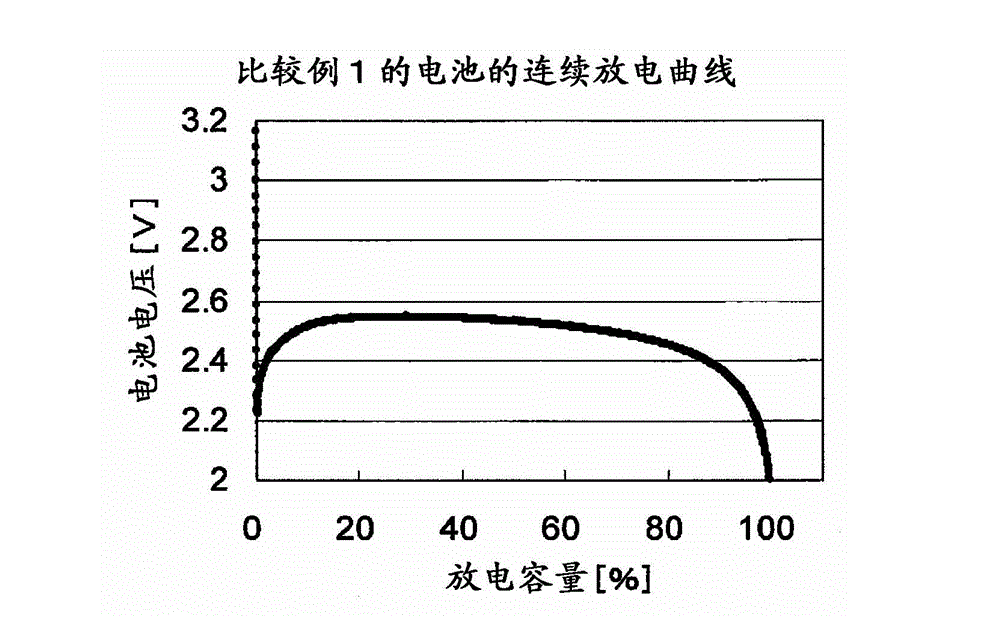Lithium primary cell
A battery and lithium electrode technology, applied in the field of lithium primary batteries, can solve the problems of discharge efficiency, that is, lower energy density, suppress voltage drop, etc., and achieve the effects of less energy density reduction, improved pulse discharge characteristics, and excellent pulse discharge characteristics
- Summary
- Abstract
- Description
- Claims
- Application Information
AI Technical Summary
Problems solved by technology
Method used
Image
Examples
Embodiment 1
[0109] In Example 1, the first active material capable of storing lithium ions and the second active material capable of storing and releasing lithium ions were used as positive electrode active materials to produce figure 1 A button-type lithium primary battery is shown. As the first active material, graphite fluoride (CF) is used n , as the second active material, polymer X represented by formula (15) as a quinone compound is used. The method for synthesizing the polymer X is described in detail in Patent Document 3 and the like. The molecular weight of the polymer X used was 9783 (value relative to polystyrene standards) in terms of weight average molecular weight, and its degree of polymerization was about 30. In addition, graphite fluoride (CF) n The open circuit potential at DOD0% is 3.15V, and the average discharge potential is 2.55V. The open circuit potential of Polymer X at DOD0% was 3.05V.
[0110]
[0111] [Production of positive electrode]
[0112] Polyme...
Embodiment 2
[0117] In Example 2, the first active material capable of storing lithium ions and the second active material capable of storing and releasing lithium ions were used as the positive electrode active material to produce figure 1 A button-type lithium primary battery is shown. As the first active material, graphite fluoride (CF) is used n , as the second active material, polymer Y represented by formula (16) as a quinone compound is used. Polymer Y is the reduced state of polymer X.
[0118]
[0119] First, polymer X is subjected to reduction treatment. That is, after dissolving polymer X in N-methylpyrrolidone, impregnated in Li 2 CO 3 Reduction treatment is carried out in an aqueous solution of , thereby obtaining a polymer Y represented by formula (16). Next, weigh 15 mg of polymer Y, graphite fluoride (CF) n 15 mg and 80 mg of acetylene black as a conductive additive were put into a mortar and kneaded. Furthermore, 20 mg of polytetrafluoroethylene was added as a bi...
Embodiment 3
[0122] In Example 3, the first active material capable of storing lithium ions and the second active material capable of storing and releasing lithium ions were used as positive electrode active materials to produce figure 1 A coin-type lithium primary battery is shown. As the first active material, graphite fluoride (CF) is used n , as the second active material, a polymer represented by formula (17) that is a tetraketone compound is used. In formula (17), the ratio of m and n representing the number of repeating units is 50:50. The weight average molecular weight of the polymer of formula (17) was 49840 in terms of polystyrene, and the degree of polymerization was 112. The synthesis method of the polymer of formula (17) is described in detail in, for example, International Publication No. 2011 / 111401. Except that the second active material was different, the button-type lithium primary battery of Example 3 was obtained by the same method as that of Example 1. The open ci...
PUM
| Property | Measurement | Unit |
|---|---|---|
| thickness | aaaaa | aaaaa |
| degree of polymerization | aaaaa | aaaaa |
| degree of polymerization | aaaaa | aaaaa |
Abstract
Description
Claims
Application Information
 Login to View More
Login to View More - R&D
- Intellectual Property
- Life Sciences
- Materials
- Tech Scout
- Unparalleled Data Quality
- Higher Quality Content
- 60% Fewer Hallucinations
Browse by: Latest US Patents, China's latest patents, Technical Efficacy Thesaurus, Application Domain, Technology Topic, Popular Technical Reports.
© 2025 PatSnap. All rights reserved.Legal|Privacy policy|Modern Slavery Act Transparency Statement|Sitemap|About US| Contact US: help@patsnap.com



